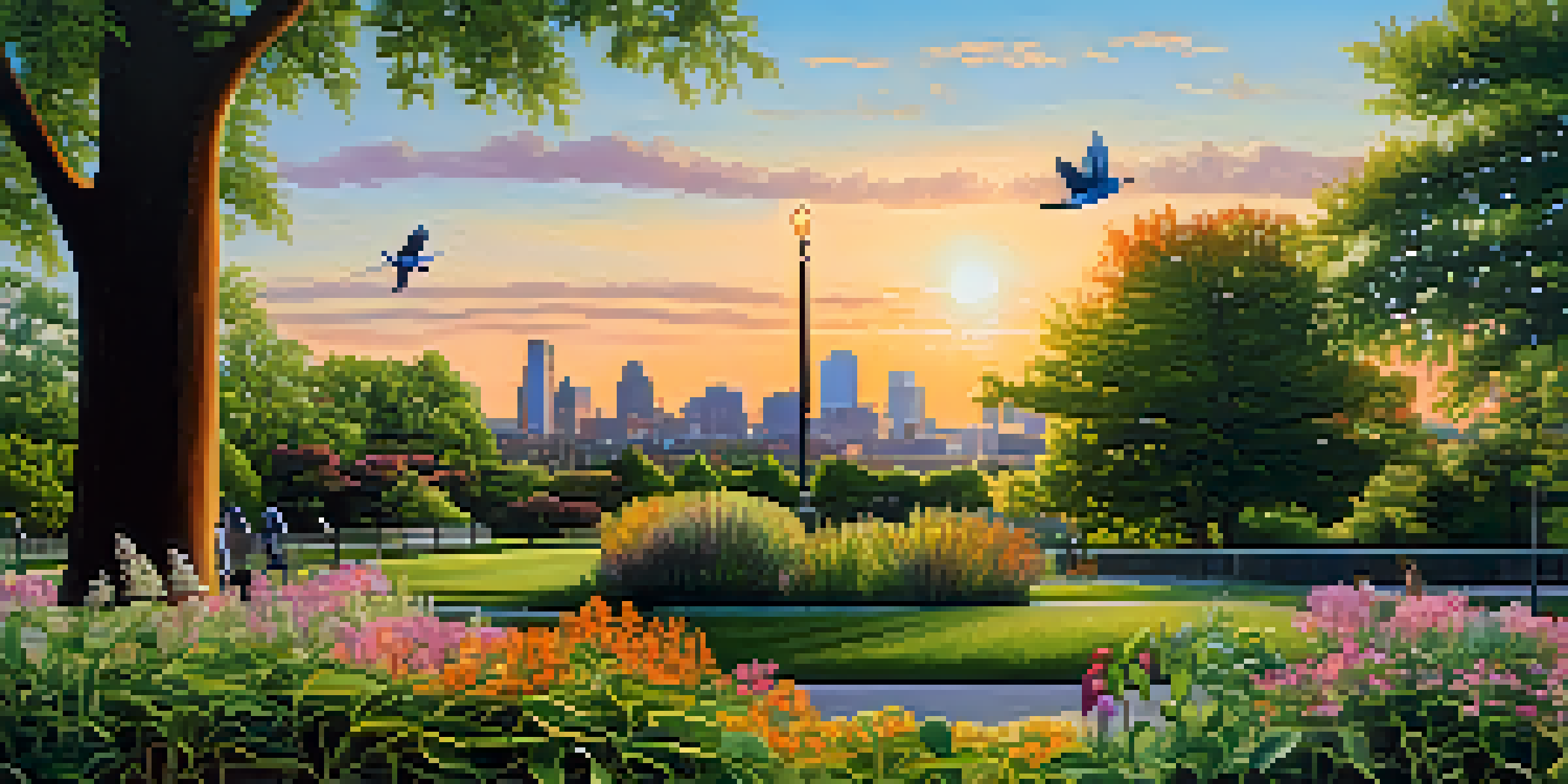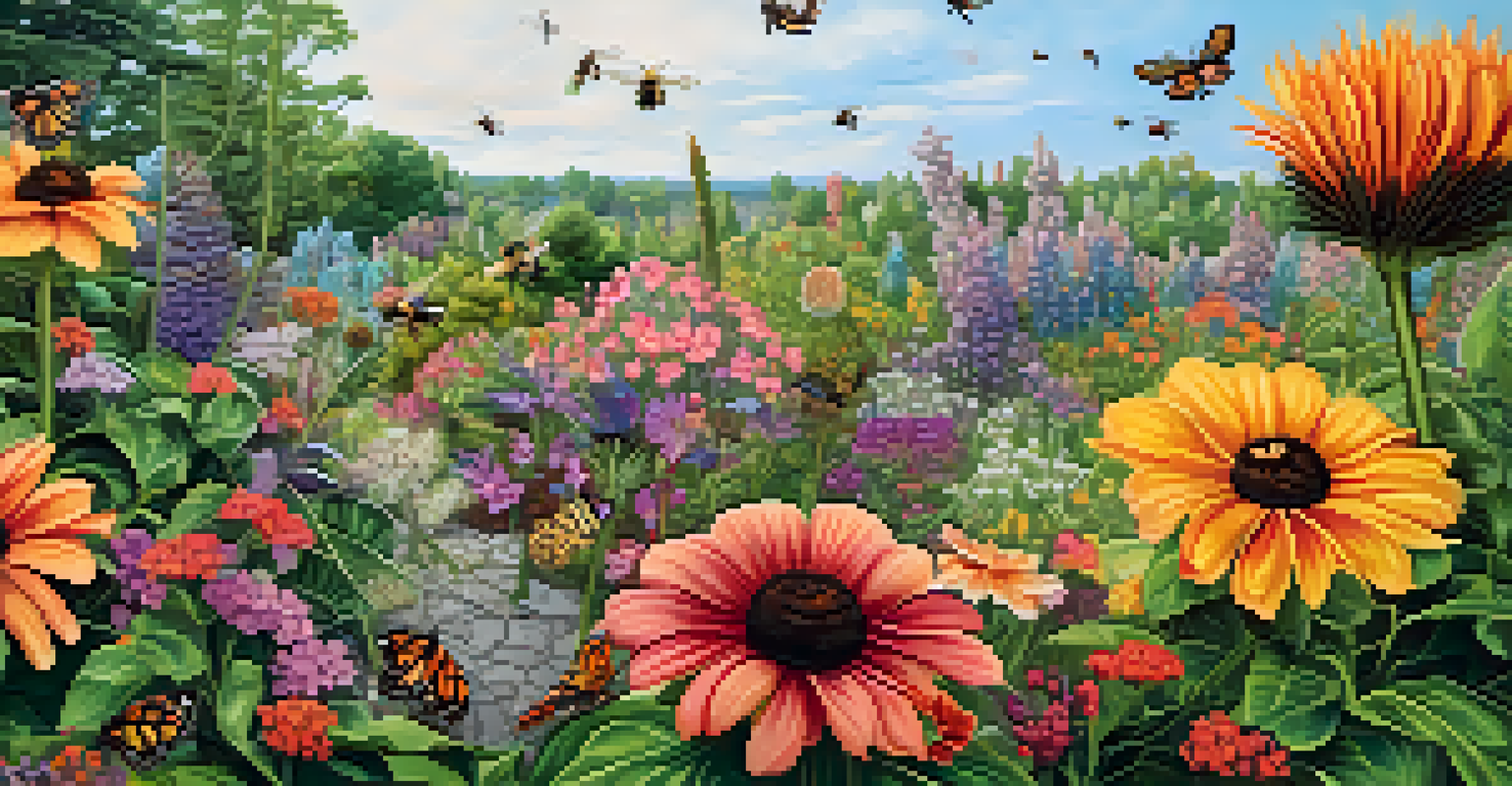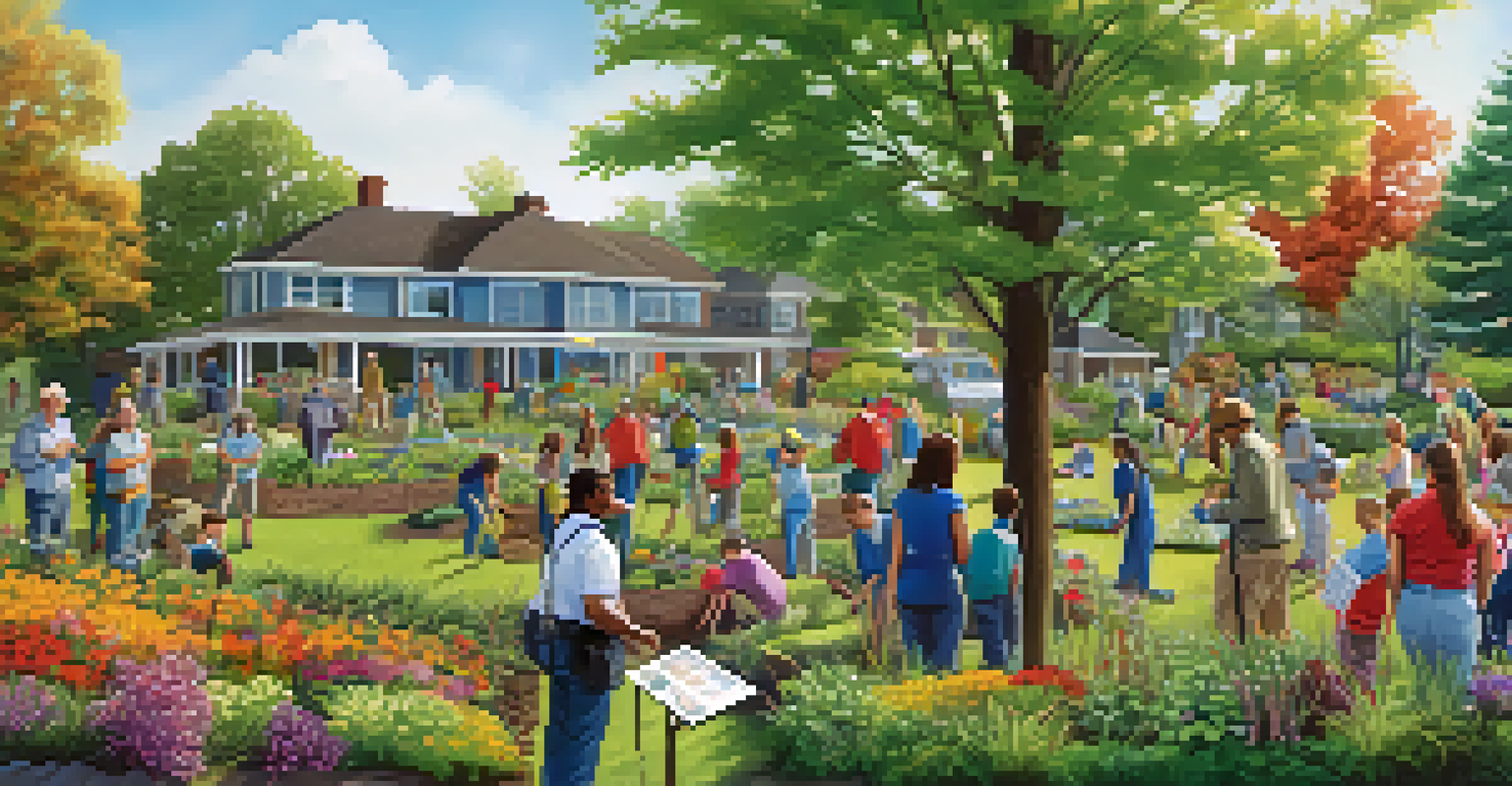The Role of Urban Wildlife in Buffalo's Ecosystem Balance

Understanding Urban Wildlife in Buffalo
Urban wildlife refers to animals that have adapted to live in city environments. In Buffalo, this includes species such as raccoons, squirrels, and various birds. These creatures thrive in parks, backyards, and even along the waterfront, showcasing their resilience and adaptability.
In every walk with nature one receives far more than he seeks.
These animals play a crucial role in the ecosystem by contributing to biodiversity. Each species brings unique traits and behaviors that influence the local environment, helping to maintain a balanced ecosystem. For instance, birds help control insect populations through predation, while rodents contribute to seed dispersal.
Furthermore, observing urban wildlife can foster a deeper connection between residents and nature. By taking the time to appreciate these animals, Buffalonians can cultivate a sense of stewardship toward their local environment, encouraging conservation efforts.
The Importance of Biodiversity in Cities
Biodiversity is vital for a healthy ecosystem, even in urban areas like Buffalo. A diverse range of species ensures that ecological processes function optimally, contributing to everything from pollination to nutrient cycling. This variety creates a more resilient environment that can better withstand disturbances such as climate change.

In Buffalo, urban wildlife contributes to this biodiversity. For example, native plants that attract local pollinators like bees and butterflies are supported by the presence of these animals. This interconnectedness highlights how urban wildlife and plant life rely on each other for survival.
Urban Wildlife Supports Ecosystems
Urban wildlife in Buffalo plays a vital role in maintaining biodiversity and ecological balance.
Moreover, the presence of diverse species can enhance the quality of life for city dwellers. Parks and green spaces filled with various wildlife provide recreational opportunities and mental health benefits, making cities more livable and enjoyable for everyone.
Ecosystem Services Provided by Urban Wildlife
Urban wildlife offers a range of ecosystem services that benefit both nature and humans. These services include pest control, pollination, and even waste decomposition. For instance, birds and bats can help keep insect populations in check, reducing the need for chemical pesticides.
We won't have a society if we destroy the environment.
Additionally, many urban animals participate in pollination, which is essential for plant reproduction and food production. In Buffalo, the presence of bees and butterflies in gardens and parks illustrates the critical role these creatures play in maintaining healthy ecosystems.
Finally, wildlife contributes to nutrient cycling by breaking down organic materials. This process helps enrich soil health, supporting plant growth and maintaining the overall health of urban green spaces. Without these services, Buffalo's ecosystem could face significant challenges.
Challenges Facing Urban Wildlife in Buffalo
Despite their important role, urban wildlife in Buffalo faces numerous challenges. Habitat loss is a significant concern, as urban development reduces the natural spaces these animals depend on. As more homes and businesses are built, wildlife must adapt or relocate, often leading to decreased populations.
Pollution is another pressing issue that impacts urban wildlife. Contaminated water sources and air pollution can harm animals and their habitats, making it difficult for them to thrive. For example, birds exposed to polluted environments may experience reproductive issues or reduced food availability.
Challenges Threaten Urban Wildlife
Urban development, pollution, and human-wildlife conflicts pose significant challenges to wildlife in Buffalo.
Moreover, human-wildlife conflicts can arise as animals venture into urban areas in search of food. While raccoons rummaging through trash cans may seem amusing, it can lead to problems for both wildlife and residents. Understanding these challenges is essential for fostering coexistence and protecting Buffalo's urban wildlife.
Conservation Efforts to Support Urban Wildlife
Conservation efforts in Buffalo aim to protect urban wildlife and their habitats. Local organizations and community groups are working to create green spaces that support biodiversity, such as pollinator gardens and wildlife corridors. These initiatives help provide safe passage for animals as they navigate the urban landscape.
Education plays a key role in these conservation efforts. By raising awareness about the importance of urban wildlife, residents can become more engaged in preserving their local ecosystems. Workshops, community events, and social media campaigns help inform the public about how they can support wildlife in their neighborhoods.
Additionally, city planners can incorporate wildlife-friendly practices into urban development. By prioritizing green roofs, native plantings, and wildlife crossings, Buffalo can create an environment where both people and wildlife can thrive together.
The Role of Community in Supporting Urban Wildlife
Community involvement is crucial for the success of urban wildlife conservation efforts in Buffalo. Residents can make simple changes in their gardens, such as planting native species and reducing pesticide use, to create a welcoming habitat for local wildlife. These small actions collectively contribute to a healthier ecosystem.
Participating in local clean-up events and habitat restoration projects also fosters a sense of community pride. When people come together to improve their environment, it enhances their connection to nature and encourages others to join in. This grassroots effort can make a significant difference in supporting Buffalo's urban wildlife.
Community Efforts Enhance Conservation
Community involvement and conservation initiatives are essential for protecting and supporting urban wildlife habitats.
Moreover, sharing experiences and observations of wildlife can inspire others to appreciate and protect these creatures. Community forums, social media groups, and local newsletters provide platforms for sharing tips and success stories, creating a ripple effect of awareness and action.
Looking Ahead: The Future of Urban Wildlife in Buffalo
As Buffalo continues to evolve, the future of its urban wildlife depends on collective efforts to balance development with ecological preservation. Sustainable practices in urban planning can help ensure that wildlife has a place to thrive amidst the bustling city. This harmony can ultimately enhance the quality of life for residents as well.
Investing in green infrastructure, such as parks and greenways, will support both wildlife and community well-being. These spaces not only provide habitat for animals but also offer recreational opportunities for people, fostering a deeper connection to nature. A city that prioritizes its natural resources is one that can thrive sustainably.

Ultimately, the future of urban wildlife in Buffalo relies on collaboration between residents, organizations, and local governments. By working together, we can create a vibrant ecosystem that benefits all inhabitants—humans and wildlife alike—ensuring a balanced and harmonious urban environment for generations to come.